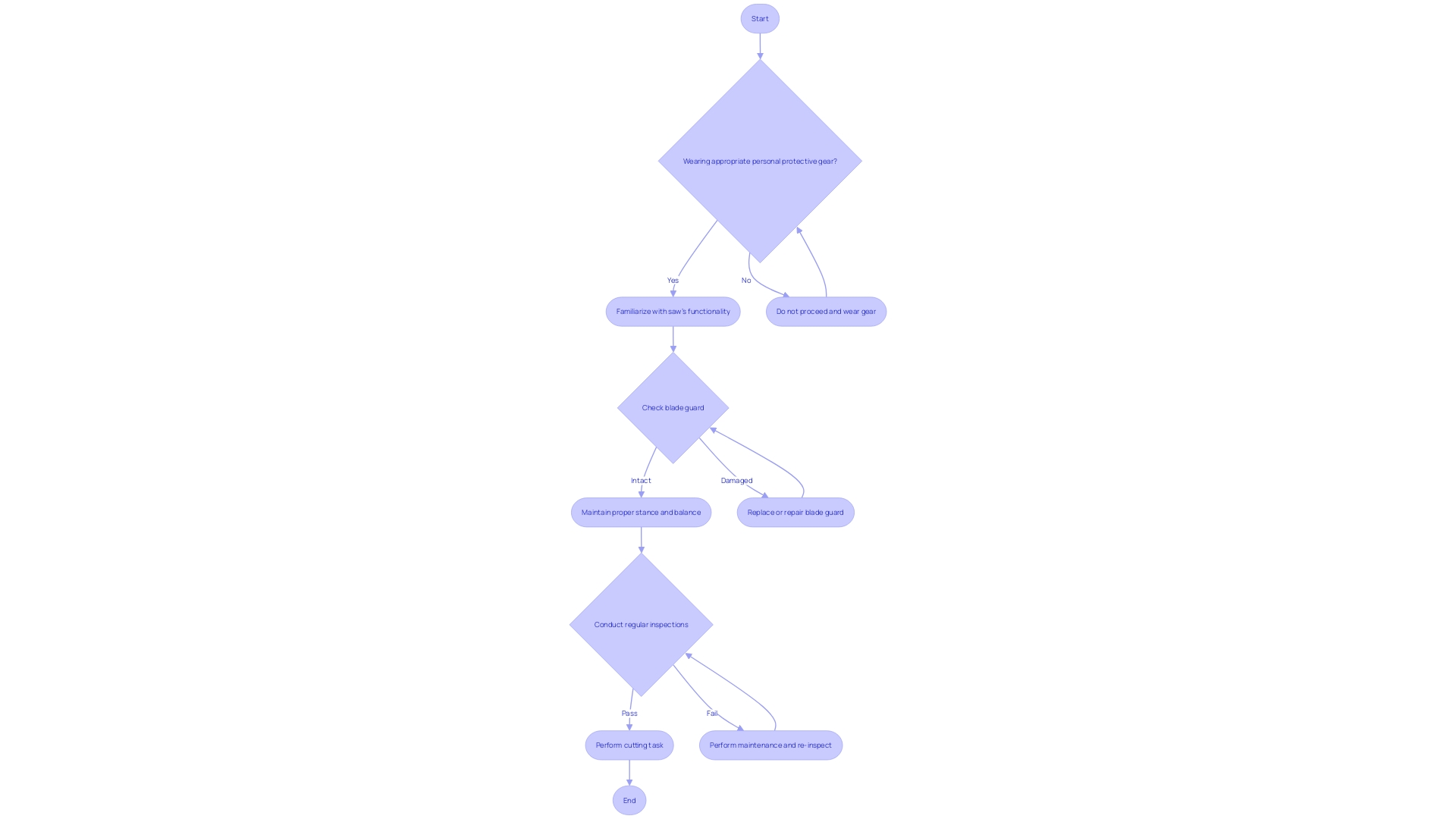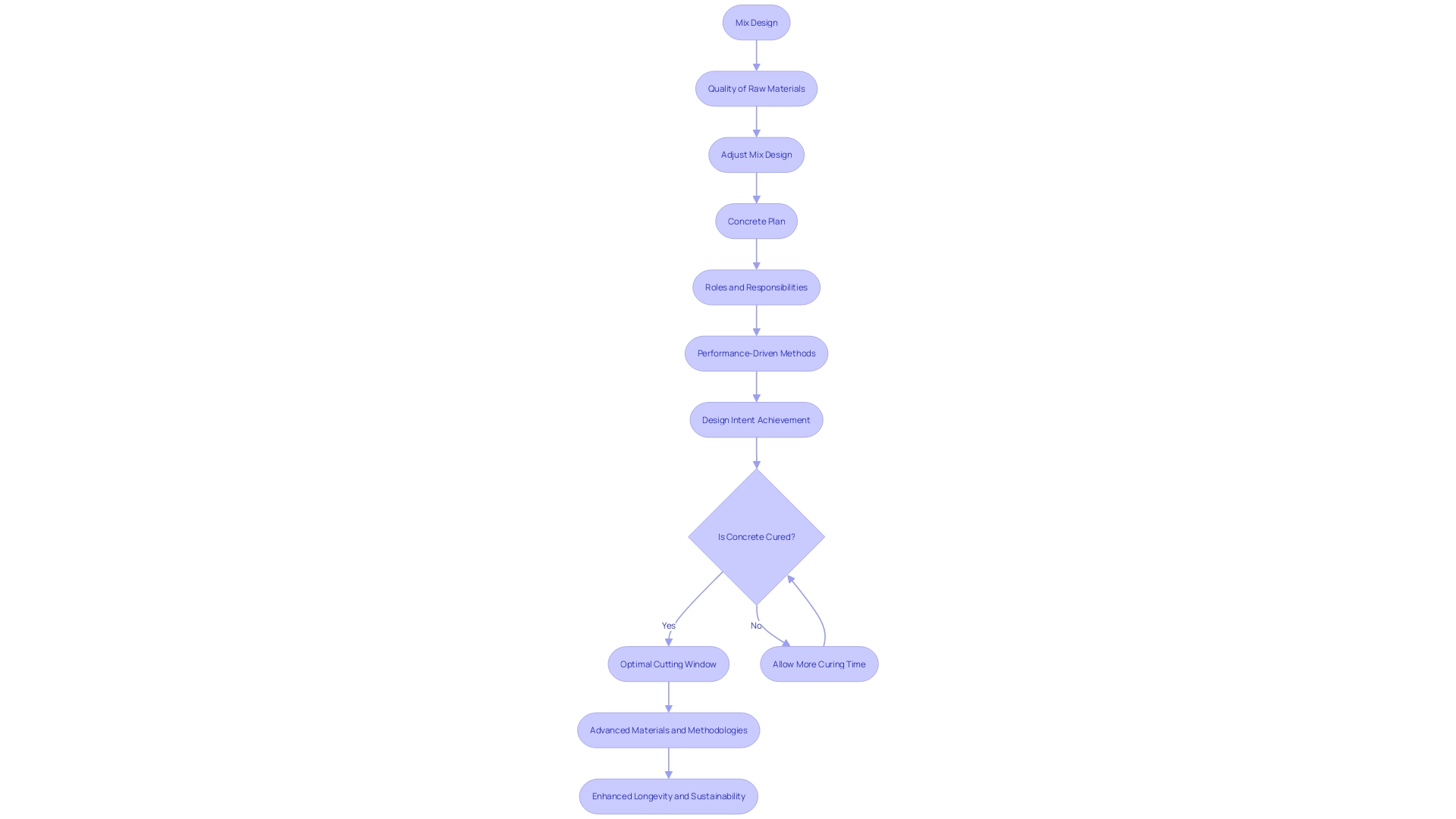Introduction
Choosing the right concrete saw for your project can be a challenging task. It's not just about efficiency, but also about achieving precise results and staying on track with project timelines. The construction site environment, the type of concrete being cut, and the depth of cuts required all play a crucial role in determining the appropriate saw.
Additionally, the use of innovative materials and the increasing demand for sustainable construction practices further complicate the decision-making process. In this article, we will explore the factors to consider when selecting a concrete saw, the different types of saws available, the power options to choose from, best practices for operating saws, and the importance of timing cuts for optimal results. By understanding these key aspects, you will be equipped with the knowledge to make an informed choice and ensure that your project is completed efficiently and with the highest standards of quality.
Choosing the Right Concrete Saw for Your Project
Selecting the appropriate concrete saw for your project is not just a matter of efficiency, but it's also about achieving precise results and maintaining project timelines. When faced with the tough materials and varying conditions of a construction site, the choice of saw can make a significant difference. For instance, the Grand Hyatt Memphis project, complicated by cold weather and sandy soil, demonstrates the need for equipment that can adapt to challenging environments. Similarly, the use of innovative materials, such as the new crack-resistant concrete inspired by the structure of nacre, calls for tools that can handle cutting-edge materials without compromising on the quality of the work.
To make an informed decision, consider the following:
- Project Scope: Assess the size of the job. A larger project may require a more robust saw with a longer run time between maintenance checks.
- Material Type: Understand the concrete you're cutting, as specialized applications may necessitate a saw designed for that purpose.
- Cut Depth: Ensure the saw can handle the depth of cuts required, as deeper cuts may need saws with more power and larger blades.
Market research and a comprehensive understanding of the current trends, like the increase in sustainable construction practices, are essential. The demand for eco-friendly materials has led to the use of recycled concrete and waste materials, which may affect the type of saw needed.
Lastly, the availability of various concrete saws and cutters for rental offers flexibility in pricing and location, making it easier to find the right tool for your specific needs without the commitment of a purchase. Whether you're dealing with a demanding project like Metro Waterproofing's waterproofing installation or exploring innovative building materials, the right rental can ensure that your project stays on track and within budget.
Types of Concrete Saws: Cut-Off and Diamond Saws
When it comes to concrete saws, professionals have a variety of tools at their disposal, each designed for specific applications. Cut-off saws, often handheld for precision work, are a popular choice for smaller tasks that require careful cutting. These saws are highly versatile and can be easily maneuvered, making them a go-to for projects that demand intricate work.
However, for larger scale projects that involve heavy-duty cutting, diamond saws are the superior choice. These powerful saws are equipped with diamond-tipped blades known for their hardness and durability, enabling them to cut through the toughest materials with ease. The choice between cut-off and diamond saws ultimately boils down to the scale and specifics of the project at hand.
The selection of an appropriate blade is equally crucial. Blades with precision teeth are ideal for achieving maximum accuracy and a smooth finish, while those with a claw tooth design are better suited to quicker cuts and softer materials. Just as a woodworker selects the appropriate tools and blades for their project, ensuring compatibility across brands like Milwaukee or Ryobi, construction professionals must also consider the right blade for their concrete saw, based on the material and desired outcome.
The innovation in saw blade technology is ongoing, with industry experts like Jeff Yoders highlighting the advancements in construction tools. Furthermore, the development of self-healing concrete, as described in the BioFiber project, is setting new benchmarks in construction materials. This cutting-edge technology uses biomineralizing bacteria to repair cracks in concrete, potentially extending the lifespan of structures and reducing greenhouse gas emissions associated with concrete production.
When renting a concrete saw, it's not just about the equipment itself, but the results it can deliver. As echoed by industry leaders, the focus should be on finding a solution that addresses specific project needs. As the cutting tool market continues to evolve and grow, it's essential to stay informed on options, prices, and rental locations to ensure that each project is completed with the highest standards of efficiency and quality.
Power Options for Concrete Saws: Gas, Electric, Hydraulic, and Pneumatic
Selecting the right concrete saw for your project involves considering the power source, which should align with the specific requirements of your job. Gas-powered saws are favored for their portability and robust performance, ideal for tackling outdoor projects where mobility is key. For indoor settings where noise is a concern, electric saws are the preferred choice due to their quieter operation. Hydraulic saws are recognized for their formidable power output and are typically used in heavy-duty commercial applications. Pneumatic saws, which operate on compressed air, are a go-to option at construction sites devoid of electrical access, offering reliable power where needed. Whichever power option you choose, it's important to ensure it complements the demands of your construction project for optimal performance.
Best Practices for Operating Concrete Saws
Ensuring safe and efficient use of concrete saws is crucial in the construction industry, where precision and safety are paramount. Here are the best practices you should abide by:
- Always don appropriate personal protective gear, including safety glasses, ear plugs or muffs, durable gloves, and steel-toed footwear.
- Prior to use, acquaint yourself with the saw's functionality and built-in safety mechanisms.
- Maintain a proper stance and balance while operating the saw to avoid mishaps.
- Ensure your hold on the saw is firm and your pressure is consistent to achieve a smooth cut.
- The blade guard should remain intact to prevent debris kickback, and remember, the saw is designed specifically for cutting concrete.
- Regular inspections for signs of wear or damage are essential, and timely maintenance is key to the saw's performance.
By adopting these safety measures and operational techniques, you can enhance the efficiency of your work while significantly lowering the risk of accidents, as echoed by safety protocols from the Occupational Safety and Health Administration. This approach is not just about compliance, but also about integrating safety into every aspect of the job.
In the dynamic environment of construction, companies like Last Arrow Manufacturing underscore the significance of quality control and precision in their metalworking services. Similarly, the intelligent automation solutions provided by GrayMatter Robotics align with the construction industry's growth projected by Glenigan's UK Construction Industry Forecast, confirming an expected increase despite economic pressures.
The bottom line is that safety and efficiency are not just best practices but are also indispensable for the sustainability and advancement of construction projects in an industry that is continually evolving and facing new challenges.

Timing Your Cuts: When to Cut Concrete for Optimal Results
Discerning the ideal timing for concrete cutting is pivotal, not solely for the sake of achieving pristine and precise cuts, but also to preserve the structural soundness of the concrete. Bear in mind the following pivotal factors: Allow the concrete to cure sufficiently so it can bear the weight of the saw without succumbing to undue cracking. Premature cutting, while the concrete is excessively tender, can lead to damage, whereas procrastination may cause uncontrolled cracking. Heeding the recommended cutting window is therefore essential for optimal results. This nuanced approach to timing is akin to maintaining a steady pace in traffic to ensure an efficient journey, as underscored by Yuji Ito of the Frontier Research Center. The overarching goal is to streamline operations to minimize downtime, much like strategically timing concrete cuts to reduce the need for repairs. Innovations such as the BioFiber project's self-healing concrete, which draws upon Lysinibacillus sphaericus bacteria for bio-repair, underscore the importance of precision in concrete work. By integrating such advanced materials and methodologies, the longevity and sustainability of concrete structures can be significantly enhanced, contributing to a reduction in the construction industry's carbon footprint.

Conclusion
Choosing the right concrete saw for your project is crucial for achieving precise results and staying on track with project timelines. Factors such as the construction site environment, material type, and cut depth all play a significant role in determining the appropriate saw. Additionally, the use of innovative materials and the increasing demand for sustainable construction practices further complicate the decision-making process.
To make an informed choice, consider the project scope, material type, and cut depth. Understanding the size of the job, the concrete being cut, and the depth of cuts required will help you select the most suitable saw. Market research and staying updated on current trends are also essential.
Cut-off saws are popular for smaller tasks that require precision, while diamond saws are the superior choice for larger scale projects that involve heavy-duty cutting. Choosing the right blade is crucial, considering the material and desired outcome.
The power source of the concrete saw is another important consideration. Gas-powered saws offer portability and robust performance for outdoor projects, while electric saws are preferred for indoor settings due to their quieter operation. Hydraulic saws provide formidable power output for heavy-duty commercial applications, and pneumatic saws are reliable options in construction sites without electrical access.
Operating concrete saws safely and efficiently is paramount. Always wear appropriate personal protective gear, familiarize yourself with the saw's functionality and safety mechanisms, and maintain a proper stance and balance. Regular inspections and timely maintenance are also essential.
Timing your cuts is pivotal for achieving optimal results and preserving the structural soundness of the concrete. Allowing the concrete to cure sufficiently and cutting within the recommended window will help prevent damage and uncontrolled cracking. Strategic timing of concrete cuts can minimize downtime and reduce the need for repairs.
In conclusion, selecting the right concrete saw, understanding the different types and power options, following best practices for operation, and timing cuts appropriately are all essential for completing construction projects efficiently and with the highest standards of quality. By considering these factors, you can make informed choices and overcome the challenges associated with concrete cutting, ensuring successful outcomes for your projects.




